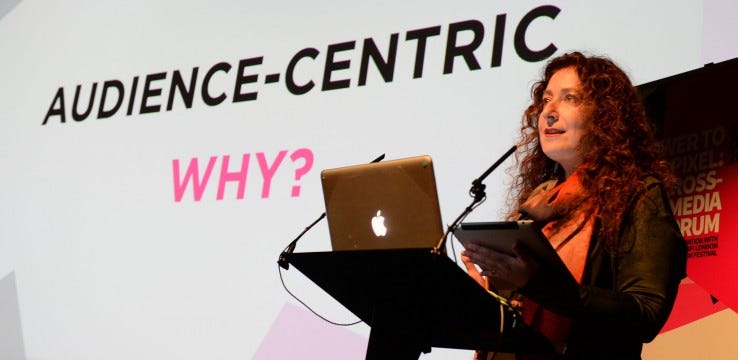Whatever Happened to the “T” Word?
An Immerse response

A decade ago, when launching Power to the Pixel, I made a conscious decision to avoid using the “T” word.
The term became so hyped and overused that it quickly lost any specific meaning. It was something and nothing, and soon valuable time was being wasted on definition rather than application.
Transmedia became an end, rather than a means. It put platform before story, and was more focused on how to cross media than why.
The term persisted, to some extent, because of its use by a few genuinely visionary and pioneering storytellers. But its currency was tainted by too many low-grade projects jumping on the bandwagon, creating the impression that it was a failed concept.
So, transmedia the term has limited value but the concepts that once underpinned are far from obsolete.
A better question might be “What happened to cross-media storytelling?”, to which the answer is simple: It grew up.
Power to the Pixel has been running labs, workshops and markets for 10 years and in each of those years, projects arrived that opened up new interactive narrative possibilities.
They included:
- Alternate Reality Games
- Immersive Theatre
- Web docs
- Art installations with interactive elements
- Social-media centered integrated advertising campaigns
- Cross-platform projects, bringing together combinations of film/television/ books/ comic books/ games/websites/apps, etc.
- Interactive marketing and audience engagement plans built around storyworlds and franchises
- Virtual and Mixed Reality
Occasionally, the presenters still used “transmedia” as a catch-all term to describe their work but it soon became unnecessary.
The unprecedented speed of developments in the interactive digital environment meant that thrillingly original ideas in one year might have slipped into the mainstream the next.
The power of interactive storytelling in building brands and communicating ideas is so ingrained that it is at the heart of the major Hollywood franchises, games development, advertising campaigns, and a growing army of other industrial applications.
Power to the Pixel has been acknowledged as an influence in helping turn ideas into practical value for a wide range of media and industries.
I am as excited by new cross-platform and interactive ideas as I ever was but I think the needs of the audience and the market have changed.
One thing that has been increasingly apparent to me is that there are weaknesses in the mechanisms for developing cross-media and interactive storytelling innovation. And, while mature applications of ideas are making serious money in global industries, there are questions about the business models for independent development and for the incubation and acceleration of projects.
Power to the Pixel, for example, is shifting its attention to these issues, in particular, brand-building around communities of fans; collaboration and co-creation; content personalization; agile user-centric methods of developing ideas; and selection of platforms and tools to serve ideas and audiences (rather than the other way around).
We’ll be announcing a series of exciting initiatives around those ideas.
So if, just this once, we use transmedia” to describe these fundamental shifts in the storytelling universe, the short answer to the question “Where is transmedia?” is “‘Everywhere.”
That should be enough motivation for those who believe we are still in the early stages of evolution of concepts that retain vast seams of untapped potential.
Immerse is an initiative of Tribeca Film Institute, MIT Open DocLab and The Fledgling Fund. Learn more about our vision for the project here.